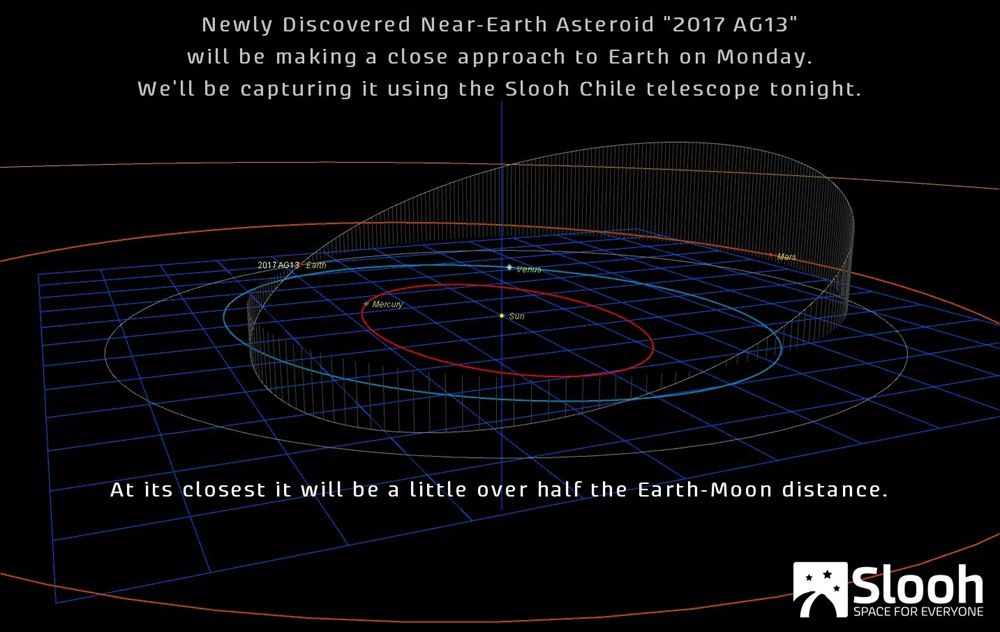A Sneaky Asteroid Buzzed By Earth Yesterday
The space rock passed by at about half the distance between our planet and the moon
/https://tf-cmsv2-smithsonianmag-media.s3.amazonaws.com/filer/84/70/8470a185-1160-4ec1-8d7d-5658fad138b7/vesta.jpg)
Monday at 7:47 A.M. EST, an asteroid passed by Earth at about half the distance between our planet and the Moon—roughly 119,500 miles, reports Mike Wall at Space.com. The space rock, dubbed 2017 AG13 was on the "smallish" size as far as asteroids go, Wall reports, thought to be between 36 and 111 feet wide.
But the most interesting thing about this near miss is that astronomers didn't spot the space rock till Saturday. It managed to fly under the radar for so long because the asteroid was fairly dim and moving fast (roughly ten miles per second). But just days before it passed us by, researchers at University of Arizona’s Catalina Sky Survey caught a glimpse.
According to astronomer Eric Edelman at the Slooh Observatory, 2017 AG13 is an Aten asteroid, or a space rock with an orbital distance from the sun similar to that of Earth. AG13 also has a particularly elliptical orbit, which means that as it circles the sun it also crosses through the orbits of both Venus and Earth.
Lucky for us, 2017 AG13 wasn’t a planet killer; according to Wall, the asteroid was in the size range of the space rock that exploded in Earth’s atmosphere over Chelyabinsk, Russia, in February, 2013. According to Deborah Byrd at EarthSky, that meteor exploded 12 miles in the atmosphere, releasing 30 times the energy of the Hiroshima nuclear bomb. Not only did it break windows in six cities, it also sent 1,500 people to the hospital. That meteor also came out of the blue, and researchers are still trying to figure out its orbit and track down its origins.
While 2017 AG13 would have caused minor damage if it hit Earth, the close call highlights the dangers of asteroids. In fact, Rebecca Boyle at NBC News writes that NASA is paying particular attention to the asteroid threat these days. In September, the agency launched the Osiris-Rex probe to sample the large asteroid Bennu, which, Boyle reports, has a 1-in-2,700 chance of smashing into Earth about 200 years from now. NASA also recently announced that the Lucy probe will study the Trojan asteroids orbiting Jupiter and the Psyche probe will explore a metal asteroid that may have been the core of planet.
The agency also established a Planetary Defense Coordination Office last year to track potentially harmful space rocks, another sign of attempts to improve detection. “There was a time where we didn't have a program to look for objects, and it was done privately,” Bill Bottke, an asteroid researcher at the Southwest Research Institute tells Boyle. “Now we have $50 million annually to look for them. Now we’re getting serious science missions to look at these.”
At the same time, Bottke says the public shouldn't view asteroids only as threats. Though the likelihood of a devastating impact is low, he says, the potential to learn from more about the universe from the space rocks is very high.
